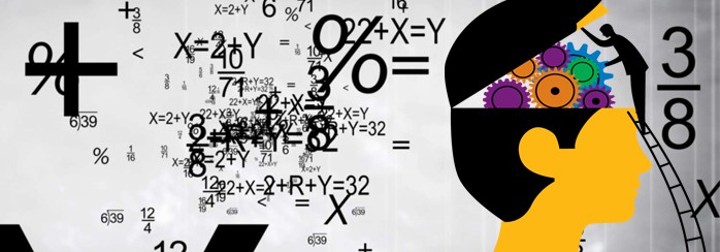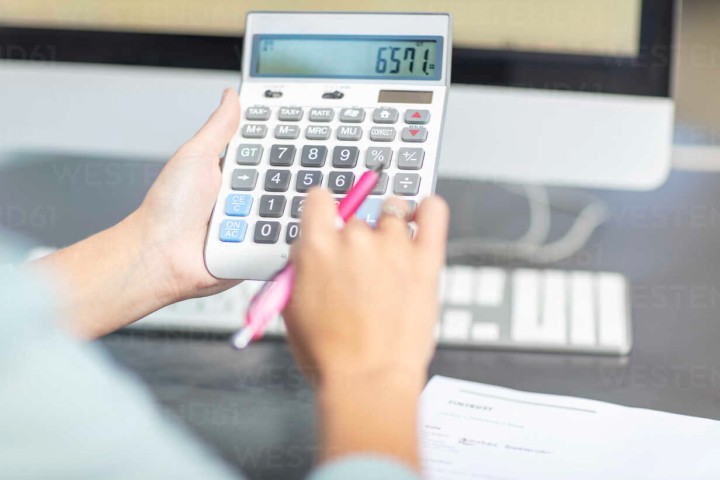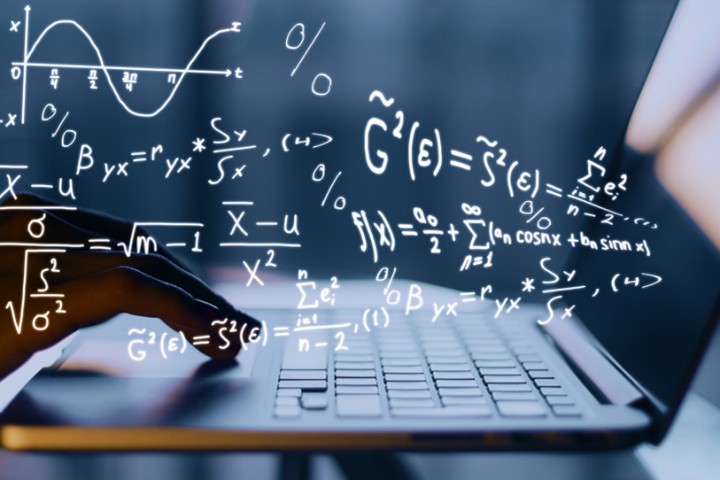Mathematics is a basic science used in everyday life and plays a vital role in many aspects of life, from calculating grocery bills to analyzing complex data. However, many people are weak in mental calculations and use calculators to solve any simple equation. Fortunately, there are tricks for teaching quick mental calculations, using which you can do many mathematical calculations faster and more accurately. In the following, we will learn some of these tricks and tips.
1. Reverse calculation of percentages
X percent of Y equals Y percent of X. You can swap the percentages if it’s easier to do the math the other way around. For example, 68% of 25 equals 25% of 68, or in other words, one-fourth of 68, which is 17. Many calculations will be easier if you keep percentages that are equivalent to basic fractions:
- 10 percent = one-tenth
- 12.5% = one eighth
- …16.666% = one sixth
- 20% = one fifth
- 25% = one quarter
- 33.333% = one third
- 50% = one half
- …66.666% = two thirds
- 75% = three quarters
2. Finding percentages of numbers
Finding the rate of numbers may be challenging, but sometimes, we can understand its value more efficiently with a bit of precision. For example, to understand the importance of 5% of 235, you can first calculate 10% or one-tenth of it. To divide 235 by 10, move the decimal point by one digit. With this, you reach the number 23.5. Then divide 23.5 by 2 (because 5% is half of 10%). So, the answer to the equation is 11.75.
3. Subtraction without borrowing figures
Mental subtraction becomes easier when you don’t need to borrow from a higher-order number. If the second number is greater than the first number (to be subtracted from), the subtraction becomes a bit more complicated. You must eliminate these more significant numbers to avoid borrowing from side numbers.
For example, in equations 925-734, the dean figures complicate the work. First, calculate 724-925 to simplify the calculation and then subtract ten from the obtained number. That’s mean:
201 = 724-925
191 = 201-10
4. Determining the divisibility of one number by another number

- Factors of 2: end in 0, 2, 4, 6 or 8.
- A multiplier of 3: The sum of their digits is three or a multiple of 3.
- Exponent 4: Ignore the hundreds digit and divide the remaining two-digit number by two. Then, do the 2nd multiplier test—multiples of 4 end in 00 or a two-digit number divisible by 4.
- Factors of 5: end in 5 or zero.
- Multiplicative 6: are even numbers that when we add their digits together, the sum is divisible by 3.
- Mudarab 7: There are several methods, all of them are more difficult than taking out the mobile phone and doing the calculation with the phone’s calculator, but maybe this method is easier than the others. In this method, you double the last digit and subtract the result from the remaining digits. For example:
1365
126=(2×5)-136
0=(2×6)-12
If you end up with zero or a multiple of 7, the original number is divisible by 7.
- Multiplier 8: Ignore the thousands of digits and divide the remaining three-digit number by 2. Then, divide the obtained number by two again and perform the test of multiples of 2. If the last three digits of a number are divisible by eight or end with three zeros, that number has a multiplier of 8.
- Multiple of 9: The sum of digits equals nine or a multiple of 9.
- Factors of 10: end in zero.
Multiples of numbers greater than 10
First, divide the desired number into single-digit numbers to measure the divisibility of numbers greater than 10. Then, do the above tests by putting all the repeated factors together.
For example, the number 60 can be divided into 5x3x2x2. Therefore, all multipliers of 60 must also be 2×2, 3, and 5. Note that we said that 2×2 means that the multiple of 60 must be divisible by 4 in addition to 2. For example, 150 is divisible by two but not by 4, so it is not divisible by 60.
5. Tricks for multiplying numbers
To perform quick calculations in the mental multiplication of numbers, try to simplify the problem.
1. Doubling numbers
When multiplying numbers in an even number, multiply the desired number by half of that number and then by 2.
2. Multiply by 5
When multiplying five by an even number, divide that number by 2. Then, put zero in front of the obtained number to get the solution of the equation. For example, for 4 x 5, first divide four by 2. Then, put zero in front of the obtained answer.
20=4×5
For multiplying odd numbers by 5, the formula is slightly changed. First, subtract one from the number multiplied by 5. Then, divide the obtained number by two and put five as the last digit before it. For example, for 3 x 5, first, we divide three minus one, and the result is two by 2, which results in 1. Finally, we put 5 in front of 1 and get the equation’s answer, which is 15.
Of course, a more straightforward method is used for even and odd numbers. In this method, we multiply the desired number by ten and divide it by 2.
3. Multiply numbers by 4
To multiply numbers by 4, we can multiply that number twice. For example, to multiply eight by 4, we get 16 by doubling 8. Then, we multiply 16 by 2 to get the answer to the equation. Therefore: 32 = 4 x 8.
4. Multiply by 9
First, multiply the desired number by ten and then subtract the obtained answer. For example, to calculate 9 x 65, we act like this:
585=650-65=65-(10×65)
5. Multiply by 10 and 11
To multiply any number by 10, we must add a zero at the end. For example, 62 multiplied by ten is equal to 620. To multiply two-digit numbers by 11, add the two digits of the desired number together and place the result between the two digits. For example, to multiply 36 by 11, you must add 3 and 6 together and put the result, i.e., the number 9, between the two digits 3 and 6. Therefore, the answer to the equation is 396.
If the sum of two numbers is two digits, put the second digit in the middle and add 1 to the first digit of the number you want to multiply by 11. For example, consider the equation 88×11:
8 (8+8) 8
68 (8+1)
9-6-8
968=88×11
6. Multiply large numbers

When multiplying large numbers, if one of the numbers is even, halve the first number and double the second number. With this method, you can quickly do the multiplication. For example:
120×20
First, divide 20 by two and multiply 120 by 2. Then multiply the obtained answers together:
2400=240×10
2400=120×20
7. Multiply numbers by 25
To multiply a number by 25, it is enough to multiply that number by 100 and then divide by 4. For example, to multiply 36 by 25, you must multiply 36 by 100. Then, divide the obtained number by 4 to get the answer to the equation.
3600=100×36
900=4÷3600
8. Multiply numbers that end in zero
Multiply the numbers without considering the zeros at the end and then add the zeros to the end of the obtained answer.
Example:
400×20
2×4=8
8000=400×20
9. Multiply numbers by 50
Multiply the desired number by 100 and then divide the result by 2. For example, to multiply 30 by 50, we first multiply 30 by 100 and then divide the product of 3000 by 2. Therefore, the development of 30 times 50 is equal to 1500.
6. Dividing numbers by 5
To divide a number by 5, multiply it by two and move the decimal point one digit to the left. For example, to divide 50 by 5, you must multiply 50 by two and then move the decimal of their product, i.e., 100, one digit to the left. By doing this, you will reach the answer to the equation, i.e., the number 10.
7. Keeping calculations simple
The more basic measures you memorize, the more you can break down significant math problems. If you have forgotten the multiplication table, review it again. Finding a multiple of 12 feels great, and realizing you can divide a more significant number.
8. Finding the perfect square of a number based on the square of the previous number
If you know the square of an integer, you can easily find the square of the next integer using the formula below.
x 2 +x+(x+1)=(x+1) 2
For example, we know that 10 to the power of 2 equals 100. Therefore, to obtain 11 to the power of 2, we use the above formula:
121=100+10+11=11 2
9. Rounding two-digit numbers before squaring them
Suppose you need to get the square of 46. First, by adding 46 to 4, round it to the nearest multiple of 10. Then, subtract the same added value from 46 to reach a new number. So you will have the numbers 50 and 42. Multiply the two numbers and then add the square of the number you used to round 46.
2116=2100+16=4 2 +(42×50)=46 2
If you find it difficult to multiply 50 x 42, you can convert it to 21 x 100.
10. Squaring two-digit numbers ending in 5

Multiply the first digit by the next digit and then add 25 to the end of their product. For example, to square 75, multiply seven by eight and then add 25 to their development, i.e., 56. Doing this will reach the equation’s answer, which is 5625.
11. Convert temperatures
To convert the approximate air temperature from Celsius to Fahrenheit, multiply the degree Celsius by two and add the product by 30, and to restore the air temperature from Fahrenheit to Celsius, subtract the air temperature from 30 and divide the result by 2. (To convert degrees Celsius to Fahrenheit more accurately, multiply the air temperature by 1.8 and add the answer to 32.)
12. Addition of large numbers
To simplify this task, you can convert all numbers to multiples of 10. For example:
238+644
Although these numbers are hard to add, rounding them up makes it easier. So we convert 644 to 650 and 238 to 240. Now we add 650 and 240 together and get 890. To find the answer to the equation, we must add the numbers we used for rounding (6 and 2) together and subtract their sum (8) from 890 to reach the final answer of the equation, which is 882. So:
238+644=882
13. Subtracting numbers from 1000
For this, subtract all the numbers except the last number from 9 and the last from 10. For example, to subtract 324 from 1000, by subtracting 3 and 2 from 9, we reach the numbers 6 and 7, respectively, and by subtracting four from 10, we reach the number 6. So:
676=324-1000
final word
By teaching quick mental calculations and practicing existing tricks and methods, you can strengthen your math skills and stop being afraid of working with numbers. By learning these tricks, math problems will become like a game for you, and you will enjoy doing them.
What tricks do you use for quick mental calculations? Are the above methods short and fast enough, or do you suggest better ways?



